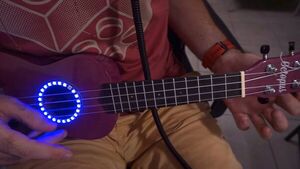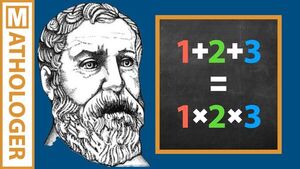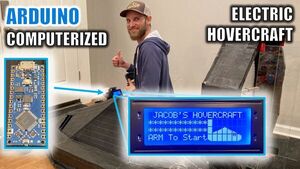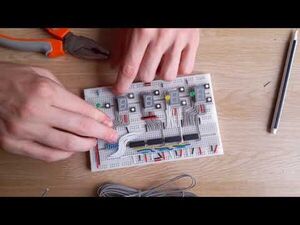2022-08-11 - Nº 380
Editorial
Esta é a Newsletter Nº 380 que se apresenta com o mesmo formato que as anteriores. Se gostar da Newsletter partilhe-a!
Todas as Newsletters encontram-se indexadas no link.
Esta Newsletter tem os seguintes tópicos:
Faz hoje anos que nascia, em 1836, o químico norueguês Cato Maximilian Guldberg. Ele, com o seu cunhado Peter Waage, formulou a lei da acção de massa (1864), que detalha os efeitos da concentração, massa, e temperatura nas taxas de reacção química. A lei estabelece que a taxa de uma alteração química depende das concentrações dos reagentes. Assim, para uma reacção: A + B -> C, a taxa de reacção é proporcional a [A][B], onde [A] e [B] são concentrações. Em 1870 Guldberg investigou a forma como o ponto de congelação e a pressão de vapor de um líquido puro são reduzidos por um componente dissolvido. Em 1890, formulou a lei de Guldberg que relaciona o ponto de ebulição e a temperatura crítica.
Faz também hoje anos que nascia, em 1921, o engenheiro electrotécnico britânico Tom Kilburn. Ele escreveu o programa informático utilizado para testar o primeiro programa armazenado num computador, a Máquina Experimental de Pequena Escala, SSEM, também conhecida como "The Baby". Testado pela primeira vez em 21 de Junho de 1948, o programa demorou 52 minutos a ser executado. O pequeno computador experimental não tinha teclado nem impressora, mas testou com sucesso um sistema de memória desenvolvido na Universidade de Manchester, em Inglaterra. Este sistema, baseado num tubo de raios catódicos, foi o primeiro a poder armazenar programas, enquanto que os computadores electrónicos anteriores tinham de ser ligados novamente para executar cada novo problema.
Faz igualmente hoje anos que nascia, em 1926, o bioquímico britânico Aaron Klug. Ele recebeu o Prémio Nobel da Química de 1982 "pelo seu desenvolvimento da microscopia electrónica cristalográfica e pela sua elucidação estrutural de complexos biologicamente importantes de proteínas-ácido nucleico". Enquanto os padrões de difracção de raios X revelam quaisquer estruturas cristalinas tridimensionais altamente ordenadas, a técnica falha para as amostras biológicas com estruturas moleculares menos ordenadas. Contudo Klug desenvolveu a microscopia electrónica cristalográfica que combinava certos princípios dos métodos de difracção com a miscroscopia electrónica, de modo a poder descobrir a estrutura 3-D dos vírus ou amostras de combinações complicadas de ácidos nucleicos e proteínas, tal como se encontram nas membranas, fibras musculares e cromossomas.
Faz também hoje anos que nascia, em 1950, o engenheiro electrotécnico norte-americano, programador informático Steve Wozniak. Também conhecido pelo seu apelido "Woz", ele em 1976, com o parceiro comercial Steve Jobs, foi co-fundador da Apple Inc., que mais tarde se tornou a maior empresa tecnológica do mundo por receitas e a maior empresa do mundo por capitalização de mercado. Através do seu trabalho na Apple nas décadas de 1970 e 1980, é amplamente reconhecido como um dos pioneiros proeminentes da revolução da computação pessoal. Em 1975, Wozniak começou a desenvolver o Apple I no computador que lançou a Apple quando ele e Jobs começaram a comercializá-lo pela primeira vez no ano seguinte. Concebeu principalmente o Apple II, introduzido em 1977, conhecido como um dos primeiros microcomputadores produzidos em massa de grande sucesso. Com o engenheiro de software Jef Raskin, Wozniak teve uma grande influência no desenvolvimento inicial dos conceitos originais Apple Macintosh de 1979 a 1981, quando Jobs assumiu o projecto após a breve saída de Wozniak da empresa devido a um acidente aéreo traumático.[6][7] Após deixar permanentemente a Apple em 1985, Wozniak fundou o CL 9 e criou o primeiro comando universal programável, lançado em 1987. Em seguida, prosseguiu vários outros negócios e empreendimentos filantrópicos ao longo da sua carreira, concentrando-se em grande parte na tecnologia nas escolas K-12.
Por fim, faz hoje anos que nascia, em 1956, o matemático francês Pierre-Louis Lions. Ele recebeu a Medalha Fields em 1994 pelo seu trabalho desde a década de 1980 sobre equações diferenciais parciais. As fontes de tais equações são muitas - por exemplo, físicas, probalísticas ou geométricas e outras sub-áreas diversas - cada uma estudando diferentes fenómenos para diferentes equações diferenciais parciais não lineares através de métodos totalmente diferentes. Pierre-Louis Lions tem sido chamado único na sua capacidade de transcender estas fronteiras e de resolver problemas prementes em todo o campo.
Na Newsletter desta semana apresentamos diversas noticias, artigos científicos, projetos de maker e alguns vídeos interessantes.
 João Alves ([email protected])
João Alves ([email protected])
O conteúdo da Newsletter encontra-se sob a licença  Creative Commons Attribution-NonCommercial-ShareAlike 4.0 International License.
Creative Commons Attribution-NonCommercial-ShareAlike 4.0 International License.
Novidades da Semana
Outras Notícias

Hydrogen fuel cells could provide emission free backup power at datacenters, Microsoft says
"Latham, New York – Hydrogen fuel cells packed into a pair of 40-foot-long shipping containers here ramped up on an overcast day early this June as engineers gathered around laptops displaying data on the state, health and power output of the cells in this first-of-a-kind hydrogen generator. “This is it, it’s running at three megawatts right now,” exclaimed Mark Monroe, a principal infrastructure engineer on Microsoft’s team for datacenter advanced development. A round of applause and shouts of joy from engineers at Plug, who built the fuel cell system, pierced the white noise from fans atop the shipping containers and pipes venting steam. The moment was the latest milestone on Microsoft’s quest to find a zero-carbon emissions replacement for the backup diesel-powered generators that support continuous operations in the event of power outages and other service disruptions. “What we just witnessed was, for the datacenter industry, a moon landing moment,” said Sean James, Microsoft’s director of datacenter research. “We have a generator that produces no emissions." [...]

Intel Introduces First Protections Against Certain Physical Threats
"Intel improves software reliability by building silicon enhancements realized through logic inside the processor. Today, the company described a new technique to complement existing software mitigations for fault injection attacks. Tunable Replica Circuit (TRC) – Fault Injection Protection uses hardware-based sensors to explicitly detect circuit-based timing failures that occur as the result of an attack. TRC is first delivered in the 12th Gen Intel® Core™ processor family. It adds fault injection detection technology to the Intel® Converged Security and Management Engine (Intel® CSME), where it is designed to detect non-invasive physical glitch attacks on the pins supplying clock and voltage. TRC is also designed to detect electromagnetic fault injections." [...]
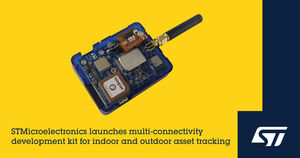
STMicroelectronics launches multi-connectivity development kit for indoor and outdoor asset tracking
"The STEVAL-ASTRA1B multi-connectivity evaluation platform from STMicroelectronics provides a complete ecosystem for building complete proof-of-concept for asset tracking systems. Battery-powered, and with a small form factor, the evaluation kit also includes firmware to simplify development targeted applications such as livestock monitoring, fleet management, and logistics. The kit helps users evaluate ST’s industry-first short- and long-range STM32 wireless System-on-Chip (SoC) devices. The STM32WL55JC sub-GHz SoC for long-range connectivity (LPWAN) implements the LoRaWAN protocol and provides LoRa, (G)FSK, (G)MSK, and BPSK modulations. The other wireless SoC is the STM32WB5MMG module for 2.4GHz Bluetooth® Low Energy and Zigbee® connectivity. Each device has an Arm® Cortex®-M4 core for application processing with a dedicated Cortex-M0+ to manage the radio." [...]

Renesas’ RZ/N2L MPUs for Industrial Ethernet Simplify Implementation of Network Functionality in Industrial Equipment
"Integrated TSN-Compliant 3-Port Gigabit Ethernet Switch Supports High-Precision Real-time Communication Renesas Electronics Corporation (TSE: 6723), a premier supplier of advanced semiconductor solutions, today announced the RZ/N2L microprocessor units (MPUs) for Industrial Ethernet communication that make it easy to add network functionality to industrial equipment and devices. The RZ/N2L complies with many industry- standard specifications and protocols to facilitate the development of industry automation devices that require real-time capabilities. The new products support the increasingly popular Time-Sensitive Networking (TSN) Ethernet standard that ensures real-time communication. Equipped with an integrated TSN-compliant 3-port Gigabit Ethernet switch and an EtherCAT slave controller, the new devices also support all major industrial network communication protocols, such as EtherCAT, PROFINET RT, EtherNet/IP, and OPC UA, as well as the new PROFINET IRT. By using the RZ/N2L as a companion chip complementing the host CPU, customers can add Industrial Ethernet functionality to their equipment without major changes to its internal configuration. This enables customers to develop industrial equipment utilizing rapid and precise synchronized control for factory automation." [...]

STMicroelectronics releases TouchGFX 4.20 for advanced graphics on STM32 microcontrollers
"STM32 user-interface design environment adds support for powerful NeoChrom graphics accelerator with new screen rotation and texture-mapping capabilities STMicroelectronics (NYSE: STM), a global semiconductor leader serving customers across the spectrum of electronics applications, has released version 4.20 of its TouchGFX user-interface design software for STM32 microcontrollers. The latest updates include support for ST’s new NeoChrom graphics accelerator, which is integrated in advanced MCUs such as the new STM32U5 series. Developed from ST’s Chrom-ART Accelerator™ that manipulates pixels and shapes, NeoChrom allows full-screen rotation at any angle and supports texture mapping for smooth, fluid graphics and enhanced ease of use. Panasonic, the global consumer-electronics brand, has used TouchGFX with STM32 microcontrollers for several years in the creation of its home appliance products. “The quality and design of the TouchGFX tools, as well as the great user experiences we have been able to implement with ST’s support, contributes to our brand awareness and experience. TouchGFX enables our engineers to be more productive,” said Wang Cong, Director, Device Solution Development Center, Panasonic Software Development Center Dalian Co,Ltd." [...]
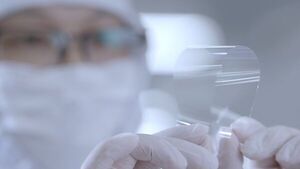
Inside Samsung’s Ultra Thin Glass Innovation
"The Galaxy foldables are reimagining what’s possible for smartphone users worldwide with unique experiences and interactions. Samsung created this new category by making the improbable a reality through innovative new technologies and sophisticated, high-precision manufacturing processes. The key element to Samsung’s foldables is the Ultra Thin Glass, a proprietary material that can be folded hundreds of thousands of times while maintaining its durability and strength. With foldable popularity quickly rising, Samsung is perfecting the production of Ultra Thin Glass to deliver more foldable devices to consumers. In this video, explore a few of the key steps in creating Ultra Thin Glass, including how Samsung cuts, shapes and polishes each piece for maximum durability to ensure only the highest quality final product. Through Samsung’s leadership and obsession with device craftsmanship, Galaxy foldables are enhancing users’ everyday lives with smartphones made for the modern era." [...]
Ciência e Tecnologia

Using a magnetic field to remotely control the air-water interface
"The Microfluidics Cluster of the UPV/EHU-University of the Basque Country has developed a novel magnetic structure designed to manipulate small volumes of fluids. A multidisciplinary study conducted by the Microfluidics Cluster of the UPV/EHU has observed and characterised a novel system involving the use of an external magnetic field to manipulate the air-water interface. The study is part of the European multidisciplinary MAMI project, in which groups and companies from six countries are participating. The work has been featured on the front cover of the prestigious journal Langmuir. Inspired by natural materials that repel water, such as lotus leaves, the study and development of interesting hydrophobic surfaces has been arousing great interest in fields such as the precise manipulation of small volumes of fluids. When magnetic properties are integrated into hydrophobic materials, the remote manipulation of the material is boosted while water is repelled, thus providing fresh perspectives for possible applications." [...]

Stars Shed Light on Why Stellar Populations Are So Similar in Milky Way
"Scientists have uncovered what sets the masses of stars, a mystery that has captivated astrophysicists for decades. Their answer? Stars, themselves. Using highly detailed simulations, a collaborative team led by researchers from the University of Texas at Austin has made a breakthrough discovery that star formation is a self-regulatory process, knowledge that may allow researchers to understand star formation within our own and far away galaxies. The study was published in Monthly Notices of the Royal Astronomical Society. The collaborative team also included experts from Carnegie Observatories, Northwestern University, Harvard University and the California Institute of Technology." [...]
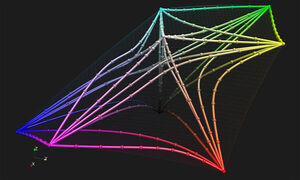
Math error: A new study overturns 100-year-old understanding of color perception
"A paradigm shift away from the 3D mathematical description developed by Schrödinger and others to describe how we see color could yield more vibrant computer displays, TVs, printed materials, textiles and more A new study corrects an important error in the 3D mathematical space developed by the Nobel Prize–winning physicist Erwin Schrödinger and others and used by scientists and industry for more than 100 years to describe how your eye distinguishes one color from another. The research has the potential to boost scientific data visualizations, improve TVs and recalibrate the textile and paint industries. “The assumed shape of color space requires a paradigm shift,” said Roxana Bujack, a computer scientist with a background in mathematics who creates scientific visualizations at Los Alamos National Laboratory. Bujack is lead author of the paper by a Los Alamos team in the Proceedings of the National Academy of Science on the mathematics of color perception. "Our research shows that the current mathematical model of how the eye perceives color differences is incorrect. That model was suggested by Bernhard Riemann and developed by Hermann von Helmholtz and Erwin Schrödinger — all giants in mathematics and physics — and proving one of them wrong is pretty much the dream of a scientist.” Modeling human color perception enables automation of image processing, computer graphics and visualization tasks." [...]

Customized fiber generates Bessel beams
"Fabricating intricate optical structures onto the tip of an optical fiber creates a new source of special light beams. An all fiber-based approach to generating special optical beams, called Bessel beams, could open up new applications in imaging, optical trapping and communications. Bessel beams look quite different from the usual Gaussian light beams found in optics. In particular, they possess several interesting properties including self-healing, diffraction-free propagation and the ability to carry orbital angular momentum (OAM). This family of beams — also known as vortex beams with a characteristic ring-like shape and a dark central region — include different “orders” of beams carrying different values of OAM. However, the creation of Bessel beams is somewhat inconvenient: several bulk optical elements, such as spatial light modulators or cone-shaped axicons, are needed to convert Gaussian beams to Bessel beams." [...]
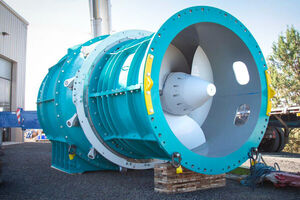
Making hydropower plants more sustainable
"Natel Energy, founded by sibling MIT alumni, is deploying hydropower systems with fish-safe turbines and other features that mimic natural river conditions. Growing up on a farm in Texas, there was always something for siblings Gia Schneider ’99 and Abe Schneider ’02, SM ’03 to do. But every Saturday at 2 p.m., no matter what, the family would go down to a local creek to fish, build rock dams and rope swings, and enjoy nature. Eventually the family began going to a remote river in Colorado each summer. The river forked in two; one side was managed by ranchers who destroyed natural features like beaver dams, while the other side remained untouched. The family noticed the fishing was better on the preserved side, which led Abe to try measuring the health of the two river ecosystems." [...]

Concrete using recycled tyre rubber hits the road to a circular economy
"Engineers have discovered a way to replace 100% of conventional aggregates in concrete – such as gravel and crushed rock – with rubber from discarded tyres that meets building codes, promising a boost for the circular economy. The team from RMIT University says the new greener and lighter concrete also promises to reduce manufacturing and transportation costs significantly. Small amounts of rubber particles from tyres are already used to replace these concrete aggregates, but efforts to replace all of the aggregates with rubber have produced weak concretes that failed to meet the required standards – until now. The study published in the Resources, Conservation & Recycling journal reveals a manufacturing process for structural lightweight concrete where the traditional coarse aggregates in the mix were completely replaced by rubber from used car tyres. Lead author and PhD researcher from RMIT University’s School of Engineering, Mohammad Momeen Ul Islam, said the findings debunked a popular theory on what could be achieved with recycled rubber particles in concrete. “We have demonstrated with our precise casting method that this decades-old perceived limitation on using large amounts of coarse rubber particles in concrete can now be overcome,” Islam said." [...]

New programmable materials can sense their own movements
"Engineers 3D print materials with networks of sensors directly incorporated. MIT researchers have developed a method for 3D printing materials with tunable mechanical properties, that sense how they are moving and interacting with the environment. The researchers create these sensing structures using just one material and a single run on a 3D printer. To accomplish this, the researchers began with 3D-printed lattice materials and incorporated networks of air-filled channels into the structure during the printing process. By measuring how the pressure changes within these channels when the structure is squeezed, bent, or stretched, engineers can receive feedback on how the material is moving. The method opens opportunities for embedding sensors within architected materials, a class of materials whose mechanical properties are programmed through form and composition." [...]
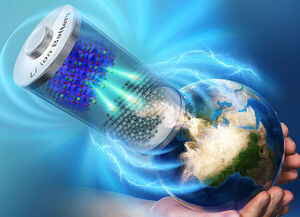
Amping Up Battery Performance with Black Glasses Grafted on Micron Silicon
"Scientists develop black glasses grafted silicon microparticles as negative electrode material for improving lithium-ion battery performance Silicon-based negative electrode materials have excellent energy capacity making them ideal for use in lithium-ion batteries. However, their practical application faces challenges including lack of mechanical strength and rapid capacity fading. To alleviate these problems, scientists from Japan Advanced Institute of Science and Technology have developed an electrode material inspired by the properties of silicon grafted with black glasses. Anodes prepared from this silicon microparticle-based material were highly resilient with excellent capacity retention. Silicon is the second most abundant element on earth, making up a hefty 27.7% percent of the earth's crust. Apart from its ability to create sandy beaches and clear glasses, silicon also holds the potential to make highly efficient metal ion batteries." [...]

Scientists identify a plant molecule that sops up iron-rich heme
"The peptide is used by legumes to control nitrogen-fixing bacteria; it may also offer leads for treating patients with too much heme in their blood. Symbiotic relationships between legumes and the bacteria that grow in their roots are critical for plant survival. Without those bacteria, the plants would have no source of nitrogen, an element that is essential for building proteins and other biomolecules, and they would be dependent on nitrogen fertilizer in the soil. To establish that symbiosis, some legume plants produce hundreds of peptides that help bacteria live within structures known as nodules within their roots. A new study from MIT reveals that one of these peptides has an unexpected function: It sops up all available heme, an iron-containing molecule. This sends the bacteria into an iron-starvation mode that ramps up their production of ammonia, the form of nitrogen that is usable for plants." [...]

Whirlpools with the symmetries of squares and tetrahedrons observed in an exotic quantum superfluid
"A team of physicists have created and observed an entirely new class of vortices – tiny and exotic whirlpools - in an ultracold gas of atoms which produce ‘beyond state-of-the-art’ symmetries. The international collaboration of researchers is led by Professor David Hall (Amherst College, USA) and UK researchers Dr Magnus Borgh (University of East Anglia) and Professor Janne Ruostekoski (Lancaster University). The discovery, announced in the journal Nature Communicationsdetails the first laboratory studies of these exotic whirlpools in an ultracold gas of atoms at temperatures as low as tens of billionths of a degree above absolute zero. The team’s work may have exciting future implications in unconventional realizations of quantum information and computing. Vortices are familiar objects in nature, from water down a bathtub drain to the airflow around a hurricane. In quantum-mechanical systems, such as an atomic Bose-Einstein condensate, the vortices tend to be tiny and their circulation comes in discrete, quantized units." [...]
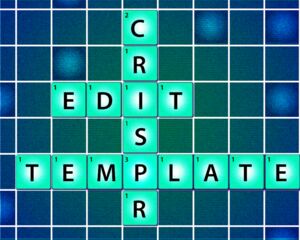
Genome Editing Terminology Is Standardized in NIST-Led Effort
"It’s good to be clear about your intentions, especially if you intend to edit someone’s DNA. Genome editing can cure diseases, boost food production and open vast new fields of scientific discovery. But to realize its full potential, scientists need to precisely describe the details of their genome editing attempts to one another and the wider world. For instance, if a company is developing a new gene therapy for use in the United States, it needs to tell the U.S. Food and Drug Administration (FDA) what the product does and demonstrate that it is safe and effective. Scientists could do that more precisely if they had a standard set of terms and definitions. As of recently, they have one." [...]

Thinking like a cyber-attacker to protect user data
"Researchers found that an understudied component of computer processors is susceptible to attacks from malicious agents. Then, they developed mitigation mechanisms. A component of computer processors that connects different parts of the chip can be exploited by malicious agents who seek to steal secret information from programs running on the computer, MIT researchers have found. Modern computer processors contain many computing units, called cores, which share the same hardware resources. The on-chip interconnect is the component that enables these cores to communicate with each other. But when programs on multiple cores run simultaneously, there is a chance they can delay one another when they use the interconnect to send data across the chip at the same time." [...]
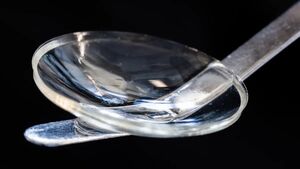
Bioengineered cornea can restore sight to the blind and visually impaired
"Researchers and entrepreneurs have developed an implant made of collagen protein from pig’s skin, which resembles the human cornea. In a pilot study, the implant restored vision to 20 people with diseased corneas, most of whom were blind prior to receiving the implant. The study jointly led by researchers at Linköping University (LiU) and LinkoCare Life Sciences AB has been published in Nature Biotechnology. The promising results bring hope to those suffering from corneal blindness and low vision by providing a bioengineered implant as an alternative to the transplantation of donated human corneas, which are scarce in countries where the need for them is greatest. “The results show that it is possible to develop a biomaterial that meets all the criteria for being used as human implants, which can be mass-produced and stored up to two years and thereby reach even more people with vision problems. Transparent, disc-shaped implant." [...]

Engineering enzymes to help solve the planet's plastic problem
"Researchers from the Manchester Institute of Biotechnology (MIB) have developed a new enzyme engineering platform to improve plastic degrading enzymes through directed evolution. To illustrate the utility of their platform, they have engineered an enzyme that can successfully degrade poly(ethylene) terephthalate (PET), the plastic commonly used in plastic bottles. In recent years, the enzymatic recycling of plastics has emerged as an attractive and environmentally friendly strategy to help alleviate the problems associated with plastic waste. Although there are a number of existing methods for recycling plastics, enzymes could potentially offer a more cost-effective and energy efficient alternative. In addition, they could be used to selectively breakdown specific components of mixed plastic waste streams that are currently difficult to recycle using existing technologies. Although promising as a technology, there are considerable hurdles that need to be overcome for enzymatic plastic recycling to be used widely on a commercial scale." [...]
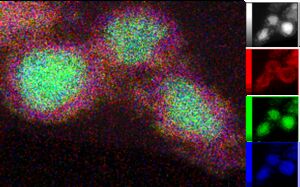
Green hydrogen: Nanostructured nickel silicide shines as a catalyst
"Electrical energy from wind or sun can be stored as chemical energy in hydrogen, an excellent fuel and energy carrier. The prerequisite for this, however, is efficient electrolysis of water with inexpensive catalysts. For the oxygen evolution reaction at the anode, nanostructured nickel silicide now promises a significant increase in efficiency. This was demonstrated by a group from the HZB, Technical University of Berlin and the Freie Universität Berlin as part of the CatLab research platform with measurements among others at BESSY II. Electrolysis might be a familiar concept from chemistry lessons in school: Two electrodes are immersed in water and put under voltage. This voltage causes water molecules to break down into their components, and gas bubbles rise at the electrodes: Oxygen gas forms at the anode, while hydrogen bubbles form at the cathode." [...]
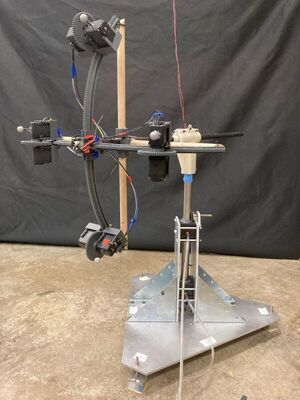
Robotic Motion in Curved Space Defies Standard Laws of Physics
"When humans, animals, and machines move throughout the world, they always push against something, whether it’s the ground, air, or water. Until recently, physicists believed this to be a constant, following the law of conservation momentum. Now, researchers from the Georgia Institute of Technology have proven the opposite – when bodies exist in curved spaces, it turns out that they can in fact move without pushing against something. The findings were published in Proceedings of the National Academy of Sciences on July 28, 2022. In the paper, a team of researchers led by Zeb Rocklin, assistant professor in the School of Physics at Georgia Tech, created a robot confined to a spherical surface with unprecedented levels of isolation from its environment, so that these curvature-induced effects would predominate. “We let our shape-changing object move on the simplest curved space, a sphere, to systematically study the motion in curved space,” said Rocklin." [...]
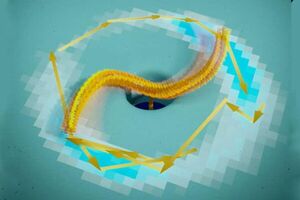
TU Delft researchers create flow-driven rotors at the nanoscale
"Researchers from TU Delft have constructed the smallest flow-driven motors in the world. Inspired by iconic Dutch windmills and biological motor proteins, they created a self-configuring flow-driven rotor from DNA that converts energy from an electrical or salt gradient into useful mechanical work. The results open new perspectives for engineering active robotics at the nanoscale. The article is now published in Nature Physics. Elusive Rotary motors have been the powerhouses of human societies for millennia: from the windmills and waterwheels across the Netherlands and the world to today’s most advanced off-shore wind turbines that drive our green-energy future. “These rotary motors, driven by a flow, also feature prominently in biological cells." [...]
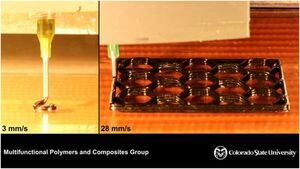
Saving time, energy and money: CSU engineering professor aims to give carbon fiber the Midas touch
"The 27-second video plays on a loop and it’s mesmerizing to watch: Carbon fiber material pouring out of a 3-D printer and slowly swirling and stacking like soft-serve ice cream. Except there's no ice cream cone or cup to hold this material, known as carbon fiber composite—a strong, lightweight material that has been used for decades on everything from airplane panels and wind turbines to tennis racquets. In the video, the material hardens on its own as it unfolds on a heated surface, with no mold or structure to hold it in place. This free-form creation shows off the work of Mostafa Yourdkhani, assistant mechanical engineering professor in the Walter Scott, Jr. College of Engineering, who is working to reduce the cost, time and energy required for production of these complex structures, according to his newest paper published on the cover of ACS Applied Materials & Interfaces. "We're making it faster and more energy efficient," said Yourdkhani. Mechanical engineering doctoral students Morteza Ziaee and James W. Johnson are also authors on the paper." [...]

UD’s Arijit Bose and collaborators find new ways to steer fusion with lasers and magnetic fields
"Imagine trying to summon the sun to your research laboratory. Yes, you, big bright star! Bring your searing heat, the drama of your core’s constant nuclear fusion and your off-the-charts energy levels with you. We want to know how to make this fusion energy happen here on Earth — at will and efficiently — so we can cross “energy supply” off our list of worries forever. But, of course, the sun can’t actually get to the lab. It lives too far away — some 93 million miles — and it is way too big (about 864,000 miles in diameter)." [...]
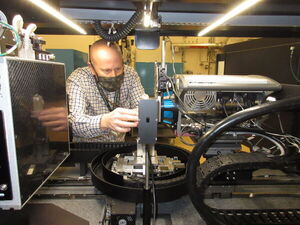
Uncovering The Past: Researchers Create 3D Images Of Fossils
"Idaho National Laboratory is perhaps best known for innovative research that helps shape the clean energy economies of today and tomorrow – and for good reason. But while much of the laboratory’s work is focused on building a sustainable future, INL is also doing its part to preserve the past. INL researchers recently imaged several fossils using a powerful X-ray microscope. The 3D images will be used to create exhibits for Wyoming’s Fossil Butte National Monument and help experts gain insight into the origins of these and other relics. The fossils, found in private quarries around Wyoming, were imaged using a technique known as X-ray microscopy. At INL, researchers typically use high-resolution X-ray microscopy to view specimens – such as samples of irradiated nuclear fuel — at a level of detail not possible with conventional microscopes." [...]
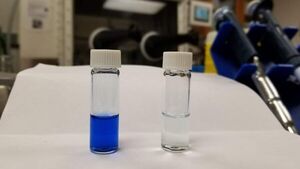
New Method Can Remove Dyes From Wastewater
"North Carolina State University researchers have demonstrated that a synthetic polymer can remove certain dyes from water, and that the polymer can be recovered and reused. The findings offer a new potential method for cleaning wastewater after use by textiles, cosmetics or other industries. “Dyes are used everywhere, including in the textile industry, as well as in pharmaceuticals, cosmetics, paper, leather and even in medicines,” said Januka Budhathoki-Uprety, lead author of a paper on the work and an assistant professor of textile engineering, chemistry and science at NC State. “If these contaminants aren’t properly removed from wastewater after dyeing and finishing, they can be a significant source of environmental pollution and pose risks for human health.” In the study, published in ACS Applied Polymer Materials, researchers made a synthetic polymer called polycarbodiimide. The researchers then tested the material’s ability to clean wastewater first by dissolving it in a solvent, and then mixing it with water contaminated with dyes. They tested the polymer solution against a series of 20 anionic dyes, also called acid dyes, which are used in the textile industry." [...]

Finding Bugs Faster Than Hackers
"USC Information Sciences Institute researchers have developed a novel approach to quickly identify security vulnerabilities. Malware, viruses, spyware, bots and more! Hackers have many tools at their disposal to ruin your day through your vulnerable technology. As we become increasingly dependent on internet-driven products (ie, phone, computer, smart home), and everything from toasters to toothbrushes can be connected to the internet, we must be ever vigilant against malicious attacks. Preventing such attacks is the goal of a group of researchers in the Binary Analysis and Systems Security (BASS) group at USC Viterbi’s Information Sciences Institute (ISI). They will be presenting their new paper — written in collaboration with Arizona State University, Cisco Systems Inc. and EURECOM — at the upcoming 35th Annual USENIX Security Symposium, one of the premier conferences in the cybersecurity space, held August 10-12 in Boston, Mass." [...]
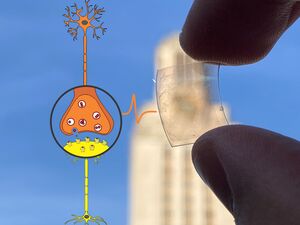
Graphene Synapses Advance Brain-Like Computers
"Researchers from The University of Texas at Austin developed synaptic transistors for brain-like computers using the thin, flexible material graphene. These transistors are similar to synapses in the brain, that connect neurons to each other. The transistors are biocompatible, which means they can interact with living cells and tissue. That is key for potential applications in medical devices that come into contact with the human body. Most materials used for these early brain-like devices are toxic, so they would not be able to contact living cells in any way. Computers that think more like human brains are inching closer to mainstream adoption." [...]
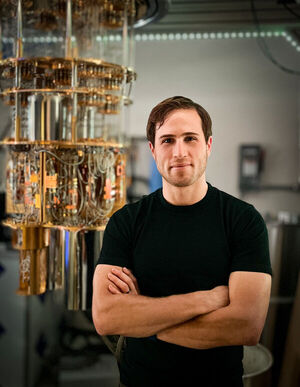
Optimizing SWAP Networks for Quantum Computing
"Experiment demonstrates how software-optimized circuits execute less error-prone quantum algorithms. A research partnership at the Advanced Quantum Testbed (AQT) at Lawrence Berkeley National Laboratory (Berkeley Lab) and Chicago-based Super.tech (acquired by ColdQuanta in May 2022) demonstrated how to optimize the execution of the ZZ SWAP network protocol, important to quantum computing. The team also introduced a new technique for quantum error mitigation that will improve the network protocol’s implementation in quantum processors. The experimental data was published this July in Physical Review Research, adding more pathways in the near term to implement quantum algorithms using gate-based quantum computing. A Smart Compiler for Superconducting Quantum Hardware Quantum processors with two- or three-dimensional architectures have limited qubit connectivity where each qubit interacts with only a limited number of other qubits. Furthermore, each qubit’s information can only exist for so long before noise and errors cause decoherence, limiting the runtime and fidelity of quantum algorithms." [...]

Breakthrough for the realization of ultrafast quantum computers: the world’s fastest 2-Qubit gate between two single atoms
"The team succeeded in executing the world's fastest two-qubit gate (a fundamental arithmetic element essential for quantum computing) using a completely new method of manipulating, with an ultrafast laser, micrometer-spaced atoms cooled to absolute zero temperature. For the past two decades, all quantum computer hardware has been chasing faster gates to escape the effects of external noise that can degrade computational accuracy. Cold-atom based quantum computers are rapidly attracting attention from industry, academia, and government around the world as revolutionary hardware that breaks through some limitations of superconducting and trapped-ion quantum computers, which are currently the most advanced types of quantum computers. Outline A research group led by graduate student Yeelai Chew, Assistant Professor Sylvain de Léséleuc and Professor Kenji Ohmori at the Institute for Molecular Science, National Institutes of Natural Sciences, are using atoms cooled to almost absolute zero*1 and trapped in optical tweezers*2 separated by a micron or so (see Fig. 1). By manipulating the atoms with a special laser light shone for 10 picoseconds (pico = one trillionth of a second), they succeeded in executing the world's fastest two-qubit gate*3, see Figs." [...]
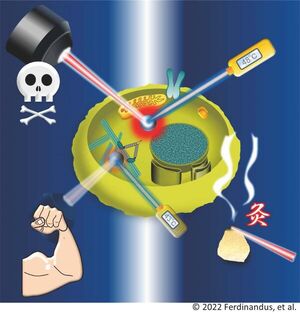
Heat and manipulate, one cell at a time
"Researchers at Kanazawa University report in ACS Nano the development of a nanoparticle that acts as a heater and a thermometer. Inserting the nanoparticle in living cells results in a heat spot that, by switching it on and off, enables the controlled modulation of local cellular activities. Being able to heat nano-sized regions in biological tissues is key to several biomedical applications. Indeed, many biological processes are temperature-sensitive, and the ability to locally modify temperature provides a way to manipulate cellular activity. A notable purpose is the destruction of cancer cells by heating them. Beside the need for an in-tissue local heating mechanism, it also important to be able to instantaneously measure the generated temperature." [...]

Husker-developed surgical robot readies for space station test
"A miniaturized robot invented by Nebraska’s Shane Farritor is on schedule to blast off into space to showcase its skills. NASA recently awarded the University of Nebraska-Lincoln $100,000 through the Established Program to Stimulate Competitive Research (EPSCoR) to ready the surgical robot for a 2024 test mission aboard the International Space Station. “NASA has been a long-term supporter of this research and, as a culmination of that effort, our robot will have a chance to fly on the International Space Station,” said Farritor, professor of engineering. Farritor is co-founder of Virtual Incision, a startup company based on Nebraska Innovation Campus. For nearly 20 years, he and his colleagues have been developing the tiny surgical robot known as MIRA, short for “miniaturized in vivo robotic assistant.” The company has attracted more than $100 million in venture capital investment since its founding in 2006. During the next year, Farritor and engineering graduate student Rachael Wagner will write software, configure MIRA to fit inside a space station experiment locker and exhaustively test the device to make sure it’s robust enough to survive launch and its systems will perform as anticipated in space." [...]
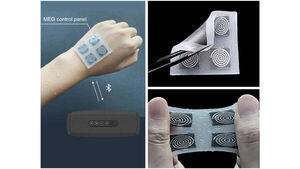
Human-Machine Interfaces Work Underwater, Generate Their Own Power
"Wearable human-machine interface devices, HMIs, can be used to control machines, computers, music players, and other systems. A challenge for conventional HMIs is the presence of sweat on human skin. In Applied Physics Reviews, by AIP Publishing, scientists at UCLA describe their development of a type of HMI that is stretchable, inexpensive, and waterproof. The device is based on a soft magnetoelastic sensor array that converts mechanical pressure from the press of a finger into an electrical signal. The device involves two main components. The first component is a layer that translates mechanical movement to a magnetic response." [...]
Projetos Maker
Diversos Projetos interessantes.

HOW to Make WiFi JAMMER BUT WITH nRF24L01
"nRF24L01 This module is a transceiver, meaning it does both send and receive. These modules are very cheap on price with small size, the operating voltage of this module is from 1.9 to 3.6 volts, MOSI, MISO and SCK pins are the SPI pins of the module. Must be connected to SPI protocol pins in Arduino. The CSN and CE pins are for setting the module to active mode and switching between command mode and data transfer. These two pins can be attached to any digital pin on the Arduino. The IRQ pin is an interrupt pin and does not need to be connected." [...]
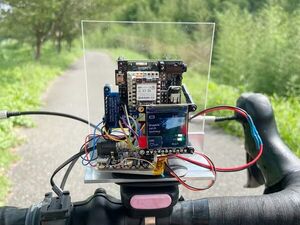
Bicycle Computer on Spresense
"A connected dash cam bicycle computer that collects your sensor data like heart rate and guides you to the nearest ice cream shop. This project aims to build a bicycle computer using the Sony Spresence main board in combination with the LTE extension board and various other peripherals. The main features are Available features - Capture a low resolution video stream and show it on a display with an option to take high resolution image for storage on a SD card - Track the location via GNSS and combine the location with weather data and points of interest (POI) data received from cloud services via the LTE connection. - Connect to bicycle sensors (currently heart rate) via Bluetooth Low Energy, show the data on the display and record it. - Remote access to the camera and various data incl. location via MQTT Partly available features / still under development - Theft detection and notification via GNSS geofence, acceleration sensor and smartphone nearby monitoring - Remote access to an audio stream from the microphone." [...]
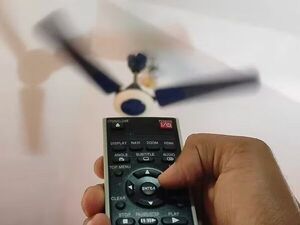
How to Make Simple Remote Control for electrical appliances
"Lets make most simplest and easy to install remote control for light, fan and any other electric home appliances. We control it using any IR Supplies: - IR receiver - 5V relay - CD4017 IC - IN4007 diode - 100K & 1K resistor - BC547B transistor - 104pF Ceramic capacitor - Old 5V mobile charger - Connector" [...]
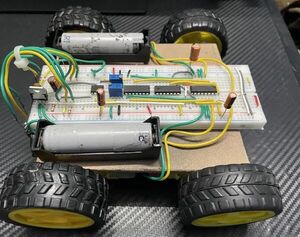
Line Follower Robot Without Using Microcontroller
"Suddenly, I got the idea to make a line follower robot without using a microcontroller. After that, I started researching this topic but can't find any proper guidance. So I started simulating and building logic for each functionality, such as forwarding direction, reverse direction, left turn, right turn, and stop. Supplies - IR receiver x2 - IR transmitter x2 - Resistors(220ohm,1K) x2 - Capacitor(0.1uF,10uF,100uF) - LM7805 - LM358 - Potentiometer - Hex inverter (74HC04) - Quad nand I.C (74HC00) - Motor Driver (L293D) - Batteries(Li-ion/9v)" [...]

Car Sentry
"I park my car on the street and it has been broken into a lot. I built a robot sentry/scarecrow that scares people away and takes photos My car gets messed with a lot. People cut into the cloth top, and I've had it cut again when replaced. So I built a robot guard. I tapped into the fusebox in my car to find a circuit that is live when the car is off. There are two motion sensors on either side, and if the robot detects movement, it turns on its LEDs and evil eyes and rotates toward the direction of movement." [...]

A Tiny Counter
"Building a simple 7 segment display counter using ATtiny microcontroller. Overview In this project, we will be controlling the 7-segment display using 2-ATtiny microcontrollers which get input from the push button and increment the number. The ATtiny will be programmed using an Arduino Uno through ISP mode. Now let's get into the project. Components Let's begin with taking a look at the individual components used in the project. ATtiny: ATtiny (also known as TinyAVR) is a subfamily of the popular 8-bit AVR microcontrollers, which typically has fewer features, fewer I/O pins, and less memory than other AVR series chips." [...]
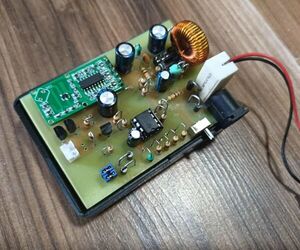
DIY Portable Alarm System
"When I was a kid, there were several political murders in the ex-YU that involved people who had Surveillance Systems that mysteriously stopped recording during the event and resumed without an issue immediately afterward. Weird right? With no evidence of tampering with the data ie. deleting recorded videos, the only explanation was that the power to the system was cut for a brief moment - resetting the system and inducing a long boot sequence, long enough for the pre-planned operation to be performed. The other explanation was that the “authorities” simply lied about the lack of evidence... In any case, having a device that would alert you when the power is lost in your home, or on a specific phase, would definitely be useful – even for the people not living in one of the ex-YU countries." [...]
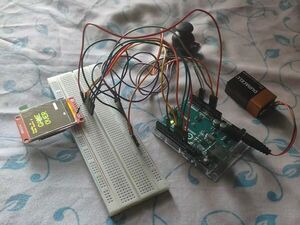
LCD Display Pongball Game
"A fun pong ball toggle game system. I developed a fun interfacing game project using Arduino components, including a 128x160 display and joystick that simulates the classic game of pong ball. I decided to try out this project after getting my hands on a TFT ST7735 LCD Display, which allows one to create interactive graphics in a display with colour. This project helped me get acquainted with the Adafruit graphic library packages and play around with game development with embedded systems. The display functions as a viewport for a simple 2D pong ball game that can be operated with a joystick. Using the Adafruit graphics library, a ball is drawn that moves across the viewport bouncing around the edges." [...]

PixMob IR Reverse Engineering Project
"Hacking the PixMob infrared protocol to enable control of PixMob wristbands at home. PixMob bracelets are LED wristbands distributed to every member of the audience at large events which all light up in sync to create massive, distributed light shows. The wristbands react to infrared commands from various types of fixed and moving transmitters. The wristbands have been used by various sports teams (including during the Super Bowl) and touring bands such as Coldplay, Shawn Mendes, Taylor Swift, Bad Bunny, The Weeknd, and Lady Gaga, to produce light shows that take advantage of the line-of-sight nature of IR light/"signals" to make light effects that vary by physical location in an event venue. After the event, bracelets are sometimes collected for reuse/recycling, but often attendees are left to take home the inactive bracelets. Some prior work has been done to "reactivate" the PixMob bracelets after the conclusion of the event they were used in, to limited levels of success." [...]
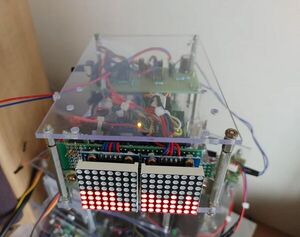
8x8 Dot Matrix Sound Level Meter
"Previously I introduced Arduino base Sound Level Meter circuit (From hereinafter as SLM) circuits using simple LEDs. This time let’s change the visual effect with a more multifunctional 8x8 LED dot matrix display. Although the previous SLM used Adafruit MAX4466 MIC-Amp break-out, this time the old is but good pre-amplifier circuit that utilizes op-amps (NE5534, TL071) is reused for capturing audio signal. When using a single line (with 10 LEDs) of the sound level display, only present audio input is suddenly displayed and disappears quickly without showing any trend of sound strength changes. That’s why I’m considering using an 8x8 LED dot matrix. As the LED matrix support 8 lines of display space, it can show 8 times of sound level change when input data shift consciously to the left." [...]

High Precision Digital AC Energy Meter Circuit Voltage-Current-Power-KWh
"Disclaimer: Some parts of this circuit carry dangerous Mains voltage. Be careful with your experiments. If you are a beginner, ask some experienced users to guide you. Dealing with the 220V-AC mains voltage and measuring the AC loads' true power, voltage, and current parameters are always considered a big challenge for electronic designers, both in circuit design and calculations. The situation gets more complex when we deal with the inductive loads because inductive loads alter the sine-wave shape of the AC signal (resistive loads don’t). In this article/video, I introduced a circuit that can measure the AC voltage, RMS current, active power, apparent power, power factor, and energy consumption (KWh) of the loads." [...]

Plant Identifying, Poison Ivy Killing Gloves
"The gloves will identify plants, among other things, and let you know if they're edible or dangerous & automatically spray poison ivy. Overview My wife likes to go mushrooming, and I like when she continues living as a result of not eating dangerous mushrooms! She also is highly allergic to poison ivy, so if we're already identifying plants on the go with a wearable we may as well kill the poison ivy. What We're Aiming For In a literal sense, we're aiming at poison ivy in an effort to destroy it and all it holds dear. But, in terms of what we're going for with the project, the idea is fundamentally pretty simple. There will be a wearable someone can have on their hand/arm such that they can walk around and it'll tell you what stuff is." [...]

3D Printed Bluetooth Headphones
"Want to build yourself an awesome sounding, decent looking pair of bluetooth headphones? You’ve come to the right place! Building these headphone doesn’t require much knowledge of electronics and beyond access to a 3D printer, only basic tools. The parts can easily be sourced from Amazon and eBay for approx USD$50. Features of the design: They sound awesome – on par with pairs that cost around $200 All parts are readily available on Amazon, eBay, AliExpress etc The ‘look’ can easily be customised by only changing the simple-to-redesign covers Simple, robust design Approx 5+ hours battry life and rechargeable battery USB-C charging Power-on and battery charge status light Intuitive easy to use controls: the up button is vol up, the front button is track forward etc Microphone for taking phone calls They can be built with almost no knowledge of electronics and using only basic tools If you want to make the corded version, see here. Parts Required: - Drivers: 2x Dayton Audio CE38MB-32 drivers." [...]
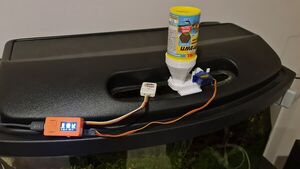
FishFeeder
"This is a really simple TinyGo project that relieaves certain worry when I travel and leave my aquarium unattended. Coupled with a Raspberry Pi with a camera, Wireguard tunnel, a couple of simple (reverse) proxies I am able to remotely care for my aquatic critters! At first I was thinking what kind of hardware to use and how to connect it to the Internet, however, I was really stoked on doing this project using Go. So, ESP32 wifi capabilities were out the window until this and related issues are resolved. Then I was thinking whether to design the hardware and solder it myself... And then one day I remembered, that I've got a couple of M5StickC modules lying around without any interesting usecase. Also, A few weeks ago, I created kind of a reminder using M5Stack Atom with experimental configurable Pomodoro timer and decided to expand on that." [...]
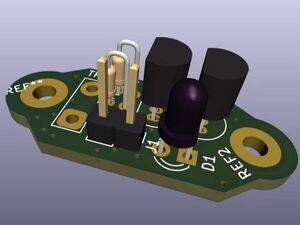
Simple Touch Sensor for LED Lighting
"In this project, we have designed a touch sensor that powers LED when the test point terminals are touched with a finger. Have you wondered about how to come up with a Touch switch by yourself? Yes! with the invention of transistors, everything became possible. In this project, we are going to build a simple Touch sensor circuit by using the BC547 transistors and other supporting components. This type of switch can be used in modern portable torches and lighters whereby touching the torch, the lamb is powered on, and on releasing it the torch goes off." [...]
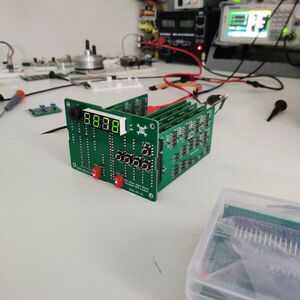
555 Timer - Timer
"We've come full circle. Here's a timer made up of timers... This project was undertaken as a potential submission for the 555-contest hosted by Hackaday in 2021. At its core this widget operates as a cooking timer, implemented with 276x 555's. The user sets the time on a 7segment display (in minutes), and the timer counts down (in base 10) until the counter is depreciated. Once all the 7segment display is all 0's, the timer triggers a temporary alarm to notify the user." [...]

Arduino Liquid Level Meter with simple Homemade Sensor
"How to make a sensor yourself, and then with the help of a microcontroller to accurately determine the level of liquid in the container. There are many different ways to detect the level of water in a particular container. This time I will describe a way to make a sensor yourself, and then with the help of a microcontroller to accurately determine the level of liquid in the container. I will also show you how this level and its change can be tracked graphically on the PC monitor. To make the sensor, we need only a ribbon cable from old IDE disk or floppy drive. First we need to separate 4 wires from the cable, and cut them to a length equal to the depth of the container in which the liquid level is to be monitored." [...]

cloudSmoker
"The cloudSmoker Barbecue Monitor project is a WiFi-enable temperature monitor. cloudSmoker is designed to read two temperatures (pit and internal meat temperatures) within my Weber BBQ smoker and upload these to an IOT dashboard, allowing remote cloud monitoring of the cook progress showing temperature vs time graphs, gauges, etc, user-definable cooking notification setpoints and exception push notifications to my smartphone, say if the pit temperatures go outside of acceptable ranges and when the meat is done and ready to be removed. Hardware is based around the NodeMCU (V1.0) ESP8266-12E microcontroller module (for both for WiFi access and microcontroller), two Maverick ET-732/733 thermistor probes, an external ADS1015 "12-bit" ADC, plus a 1602 LCD and rotary encoder for user set-up configuration and display. Minor thermistor and power filtering was also employed for stability. Coding was done using VS Code / PlatformIO IDE platform with data uploaded to ThingSpeak for display and further processing. Push exception notifications are done through Twitter using Thingspeak's React / ThingTweet functionality." [...]
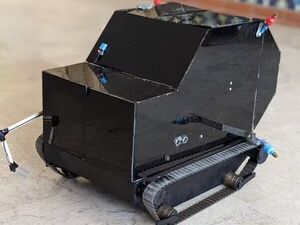
Crop monitoring and Controlling system
"A robot which is supposed to work in an agriculture field has manual and automatic movement, control pests and deploy fertilizer. Crop monitoring and controlling system is a project which is supposed to work on agriculture fields. The robot is controlled through mobile application build on MIT App inventor. The robot has reduced the human effort by working autonomously. The robot consist of multiple features. firstly it will give real tie readings of temperature, humidity and soil moisture sensors which will later be saved in form of google sheet to maintain the record of data." [...]
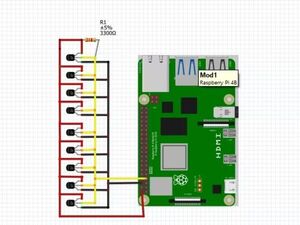
Multiple DS18B20 Temp sensors interfacing with Raspberry Pi
"Interfacing Nine DS18B20 Temperature sensors with Raspberry Pi and Displaying sensor data Using Python I have gone through some tutorials for interfacing the DS18B20, In those, They have given the explanation of how to interface the DS18B20 using Arduino Platforms Only. The least countable people explained how to interface with DS18B20 With the Raspberry using Python, in that they have interfaced only One single DS18B20. Here in this project, I am Explaining How To Interface Nine(9) DS18B20 Temperature sensors with Raspberry pi 4 B. For one of the projects, I needed to interface with 9 Waterproof Temperature sensors and Relay and Proximity sensors. Using python Programming to read the temperature From the DS18B20 was not easy initially. After a lot of Workout In the final, I read multiple DS18B20 temperatures Data." [...]

Opto-isolated tachometer
"Measure contactless the spindle speed with an optical reflection sensor. I wanted to measure the spindle speed of my milling machine after replacing the motor and installing the PWM variable speed drive. My first attempt I had built a simple tachometer with an IR reflection sensor. On the table in the laboratory everything worked fine. But after tests on the milling machine the tachometer was showing fluctuating values and incorrect speeds. The cause of this misfunction was a lot of electrical noise in my workshop and strange high frequency stray currents on the ground wire." [...]

DIY eurorack modular synth Rasberry pi VCO with Seeed XIAO
"This is a memorandum about HAGIWO/ハギヲ using seeed Xiao rp2040 and rasberry PI rp2040 to make your own VCO for the modular combiner. 53rd self-made modular synth.I took a poll on my Youtube channel and the Rasberry pi pico VCO was the most popular. However, the Rasberry pi pico has only 3-pin AD converter, and I was worried that it was a little inconvenient to use it as a VCO. Under such circumstances, Seeed studio released a small microcomputer board called Seeed Xiao RP2040. Since the AD converter has 4 pins, I thought that I could make a VCO with a minimum configuration, so I planned this module. product specs Eurorack standard 3U 6HP sizepower supply: 45mA (at 5V) Canoperate with a single 5V power supply." [...]
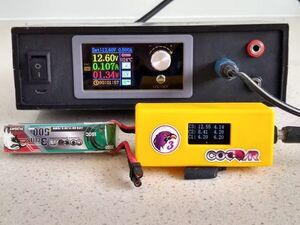
3S Battery Charger
"Build your own Li-Po & Li-ion Balance Charger for under $10 Recently I purchased some 3S Li-Po batteries for a project I was working on. Unlike single cell batteries, batteries with multiple cells should be charged in a balanced way. This is to ensure that any single cell is not overcharged and hence possibly damaged. Note that the battery has a two connecters. The 2 pin connecter is the output of all three internal Li-Po cells in series. The 4 pin connector is the charging plug and corresponds to the B-, B1, B2 and B+ connections as shown in the diagram below." [...]
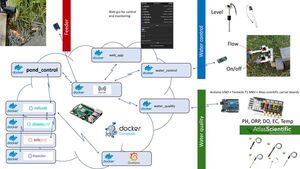
poseidon
"Poseidon - is a modular control setup for your garden pond for sensors and switches. Monitoring is done with the TICK stack (Telegraf, Influxdb, Chronograf and Kapacitor) accompanied by a python Flask webserver for the control and quick overview. All is (in my setup) running on a raspberry PI 4. The influxdb creates some CPU spikes but there is plenty of power over to serve the relevant stuff and UI experience is smooth. I used to run it on a RPI 3B but that was pushing the limits a bit (both memory and CPU) at least for the influxdb database. The application is built mainly of 5 parts (For a deeper description use the READMEs below) but each individual service can be used standalone with some tweaking: - Fishfeeder - Water Control with level and tap (including watering of the garden plants) - Web Server instance - Water Quality - Atlas scientific sensors in custom casing and mounted in a Sieve filter - Pond Control which is the "controller" in this setup The interaction with the pond is mainly done via the web app where you can control timers or interactive feeding, water on/off etc." [...]
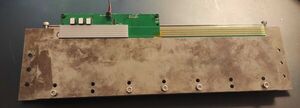
PCB Linear Actuator
"A fully integrated PCB linear actuator, with the motor driver, encoder and motor all on a single PCB. All designs are open source: Firmware and host software PCB layout and schematics, mechanical components, simulation code Motor Design and Validation Design parameters of the motor were simulated with FEMM. There are not too many free parameters to optimize, but the goal is to find some off the shelf magnets which can be used, and to estimate the importance of things like air gap on motor performance. The design ended up having the simplest possible winding layout (3 slots per pole), which maximized the amount of current carrying traces, while also having a high winding factor. 50mm * 10mm * 2mm magnets were used (which are a bit smaller in reality by ~0.5mm in each dimension), as they were easily available on EBay etc. " [...]
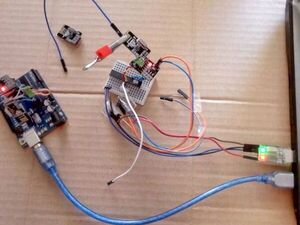
Defeat nRF24L01 in three steps
"A simple method for connecting nRF24L01 radio modules over the air is proposed. The nRF24L01+ RF transceiver module has a long range with low power consumption. Long range and low power consumption determine the widespread use of radio modules in mobile devices. However, many users have difficulty connecting modules over the air. The problems are evidenced by multi-page discussions in various technical forums. I am also not one of those lucky ones who easily managed to link radio modules." [...]
Secção Videos
Videos interessantes.
That's all Folks!




